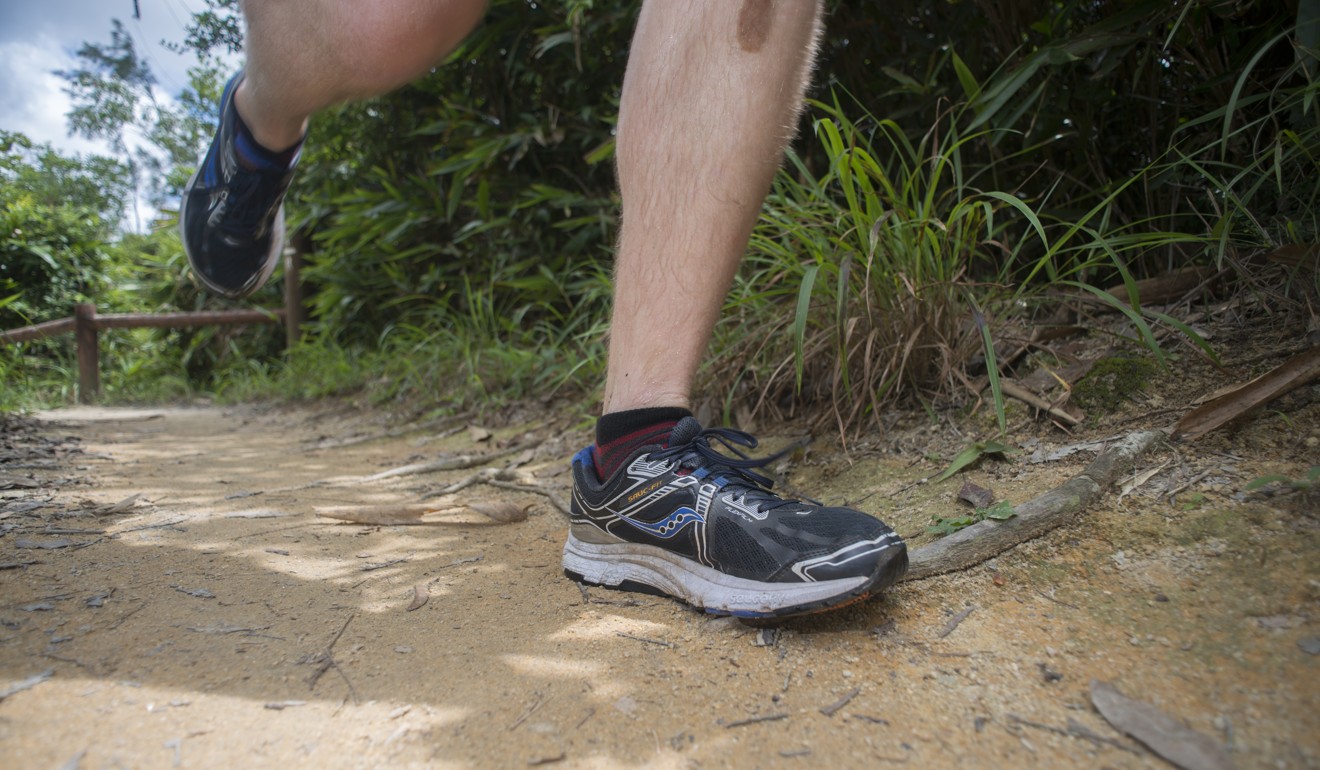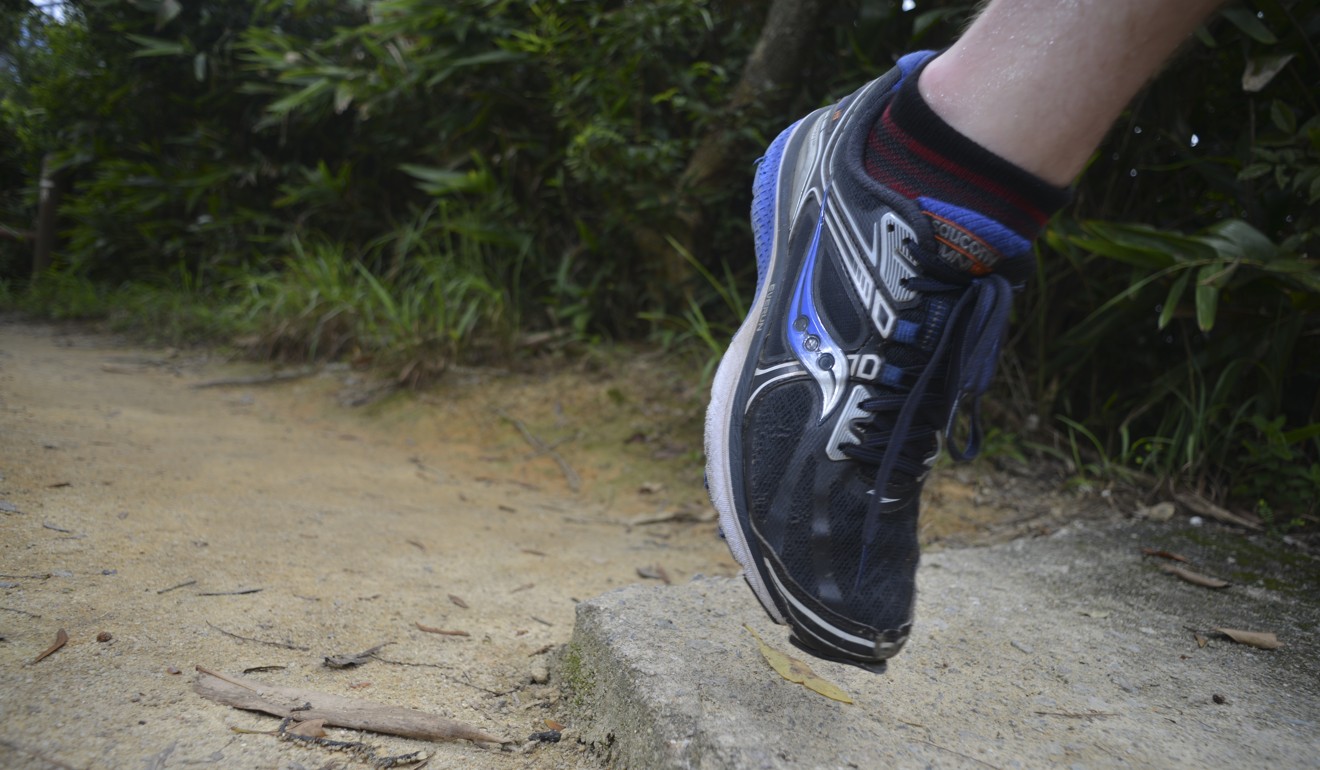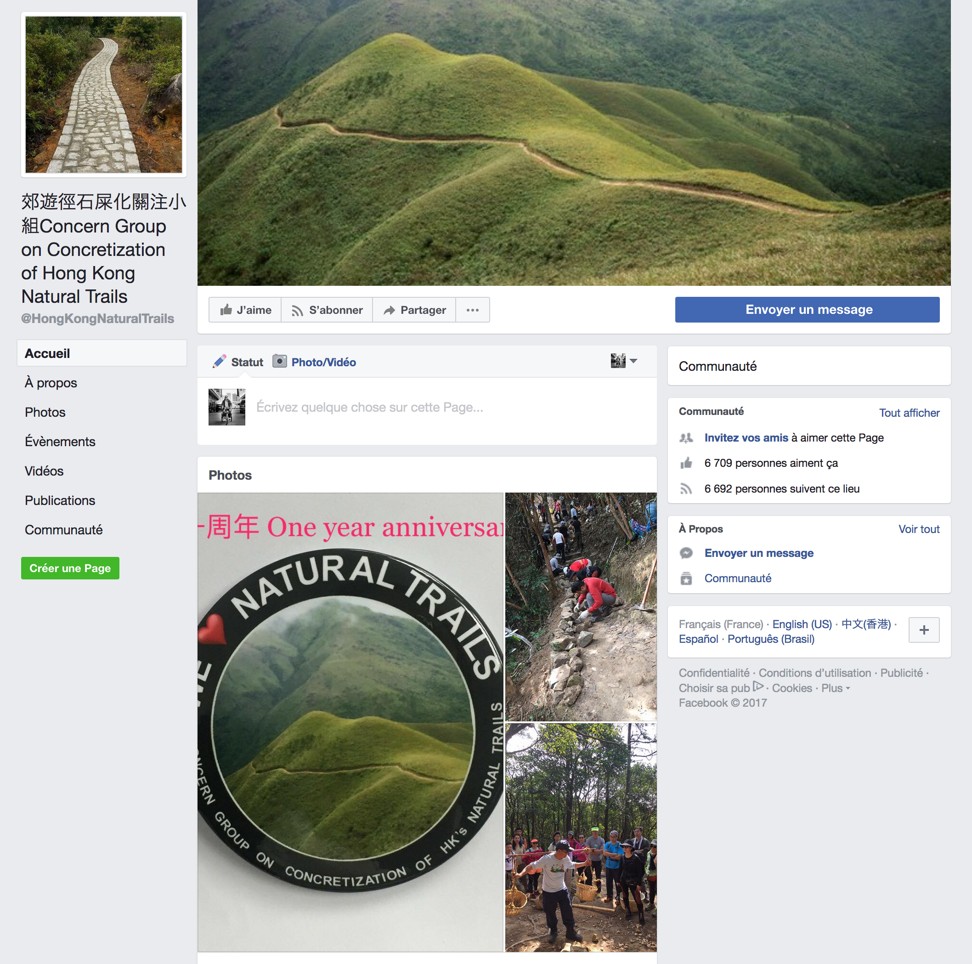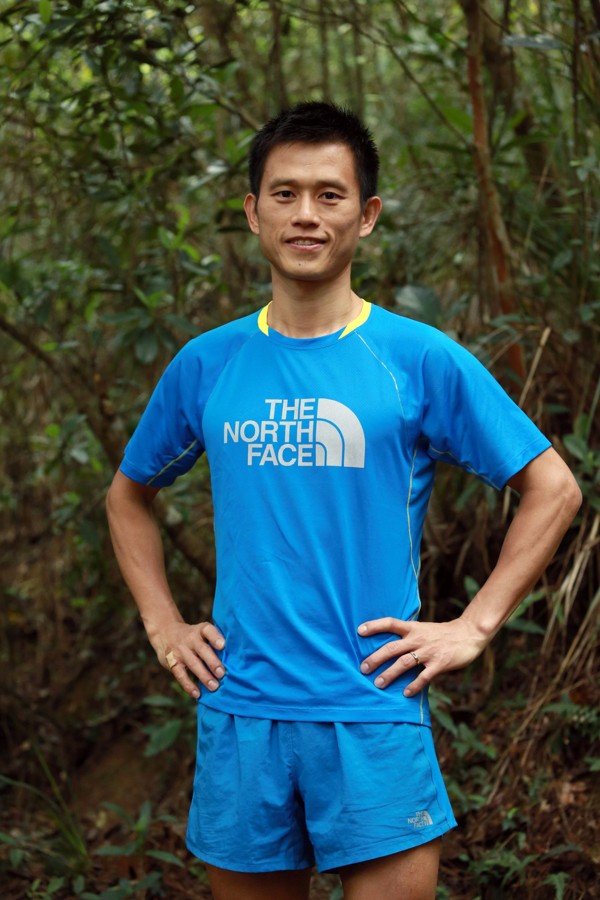
Concreting Hong Kong trails harms runners’ joints, even if it’s done for environment and safety, says expert
The repetitive jolts from landing on concrete causes tendinosis – irreversible injury to ligaments, tendons and muscles; a group is working with the government on alternatives to concreting city’s trails
Rugby players play on rugby pitches, track athletes run on tracks, rock climbers climb rocks, mountain bikers go up and down mountains on bikes. So why should trail runners run on anything but natural trails?
Knee and ankle joints suffer from the impact of running or hiking on concrete, and steps force the joints into unnatural angles, causing further injury.
Yet the Hong Kong Agriculture, Fisheries and Conservation Department (AFCD) continues to concrete trails to “protect” hikers and runners. For example, part of section eight of the Hong Kong Trail across Hong Kong Island was unnecessarily cemented as part of a government project in Big Wave Bay, in the southeast of the island, in 2008.
The repetitive jolts that result from landing on concrete causes an injury called tendinosis, in ligaments, tendons and muscles, collectively known as fascia, says Alain Chu, Hong Kong physiotherapy and acupuncture expert and mountaineer.
“Every sport should have a suitable surface. For trail running, they should be on trails. I don’t know why the government needs to change the country parks into city gardens,” Chu says.
Do not confuse tendinosis with tendinitis, Chu says. “Tendinitis is an inflammation, but inflammation is the first step of healing and can be solved in three to five weeks.
“But the tendinosis means it cannot heal; there’s no inflammation, it just can’t heal. They lose the healing power pretty much forever.”


Tendinosis is a disruption of the cells at a molecular level, meaning there is constant pain, particularly walking down stairs. If the fascia ever recovers, it takes years and a lot of treatment, Chu says.
Runners and hikers with strong tendons are less likely to suffer from tendinosis.
“If you want the tendon to get stronger, you must get used to it,” Chu says. “There are many trail runners these days, but before trail running, they did not exercise, and did not hike.
“They just go straight to running. They should spend more time building that strength. Or, for me, I go to trails without concrete.”
To make matters worse, hiking on stairs can put undue stress on joints. Paths such as the one up Lantau Peak require hikers to climb huge staircases.
The knee flexes to a far greater angle to get down each step than on a smooth gradients, Chu says, so that the ligaments and tendons are at maximum extension and pull on the knee cap.

This will cause more stress and impact, and the wear and tear of the joint surface. If the angle is very sharp, the force is very high; if you walk down slopes, the force is much less,” he says.
In walking down steps, by their very nature, hikers land on the balls of their feet. “If you walk down slopes, your foot is flat on the ground, but if you walk down steps, the foot is in the wrong position,” Chu says. “The toes land first. Under our big toes is a tendon. If you walk down stairs, especially the big steps, it will put massive pressure on this tendon, the flexor tendon on the toes. It will also cause tendinosis.”

Stone Tsang Siu-keung, founder of the Facebook page “Concern Group on Concretization of Hong Kong Natural Trails”, is reaching out to schools to educate would-be hikers on safe practice in the country parks.
“I’ve seen hikers go out in jeans, or unsuitable shoes, even take a packet of crisps hiking on a hot day - but not bring any water,” he said. “It’s not the trails that are dangerous, it’s the people.”
He works closely with the government department, trying to come up with alternatives to concreting trails.
Natural materials such as soil, sand, gravel, natural stone and rubble would generally be used as far as possible
A departmental spokesman said: “With a view to preserving the natural setting of the countryside in building and maintenance works of trails, natural materials such as soil, sand, gravel, natural stone and rubble would generally be used as far as possible.”
Even so, the spokesman said concreting trails was still important to stop soil erosion that leads to deep ditches. Concrete or wood would be used where necessary to stop surface flow of water that causes soil erosion, and subsequently forms ditches, and to prevent water run-off that is dangerous to hikers, the spokesman said.
Tsang’s concern group has addressed these points. Firstly, ditches and gullies form at the side of concrete trails as the path widens. This is because hikers and trail runners do not like using the unnatural paths so walk to the side of them, and also because the soil next to the paths becomes more prone to soil erosion. The concrete also damages ecosystems by reflecting the sun’s heat, making the area hotter and harming wildlife.
Secondly, in the winter, the paths can become slippery and in fact more dangerous for hikers. And surface flow was more likely to pour down concreted paths, Tsang said.
Tsang is heartened by the positive response to his group from the department and believes it is willing to learn, but it is an ongoing process.
Part of the problem is other government officials outside of the department’s control who think concreting trails will help win them votes, Tsang added.

